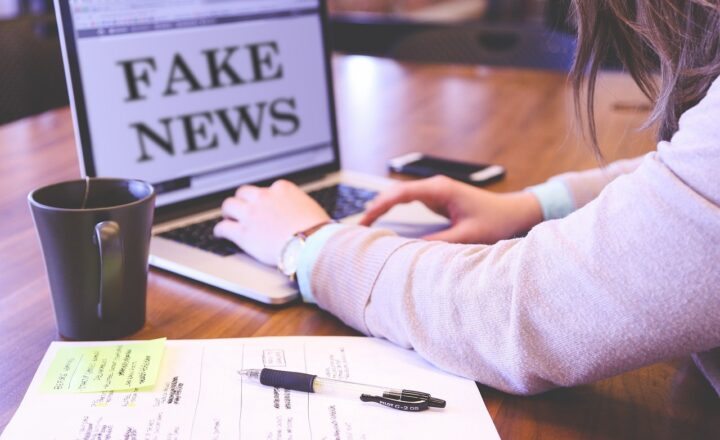The Role of AI in Detecting Fake News and Fighting Misinformation
November 11, 2024

In an era dominated by digital information, the rise of fake news and misinformation poses a significant threat to individuals, communities, and societies. With the ability to disseminate information at unprecedented speed, distinguishing between credible reports and spurious claims has never been more challenging. Enter Artificial Intelligence (AI), a powerful tool that is revolutionizing how we detect, analyze, and combat fake news and misinformation.
1. Understanding Fake News and Misinformation
Fake news can be defined as false or misleading information presented as news. Misinformation is a broader term that encompasses any false or inaccurate information, regardless of intent. The impact of fake news is profound: it can influence public opinion, affect elections, and even incite violence. According to a Pew Research study, nearly 64% of Americans believe that fake news poses a significant threat to democracy.
The spread of misinformation accelerates online due to social media platforms, where content can go viral within minutes. Hence, effectively combating this issue is crucial for maintaining informed societies.
2. The Emergence of AI in Information Verification
Artificial Intelligence encompasses a range of sophisticated technologies, including Natural Language Processing (NLP), machine learning, and computer vision, each contributing to the fight against misinformation.
Natural Language Processing (NLP): NLP enables machines to understand and interpret human language. Using NLP, AI can analyze the context and credibility of articles, recognizing linguistic patterns indicative of misinformation.
Machine Learning: Algorithms can be trained on vast datasets of verified news articles and known false reports. This training allows AI to identify features and signals that suggest a story’s authenticity. The more data AI processes, the better it becomes at elevating credible sources and flagging dubious content.
Computer Vision: AI can analyze images and videos, detecting alterations or identifying manipulated images that can accompany fake stories. Computer vision algorithms can spot inconsistencies in visual content that may suggest misinformation.
3. How AI Tools Detect Fake News
AI employs multiple techniques to combat misinformation effectively:
– Content Analysis: Tools like Snopes and FactCheck.org use AI to analyze the content for factual accuracy, cross-referencing claims with reliable sources.
– Source Verification: AI such as NewsGuard assesses the credibility of websites and news sources, empowering users to distinguish between reputable media and those known for spreading falsehoods.
– Sentiment Analysis: By analyzing user comments and social media interactions, AI can gauge public sentiment around a news topic, identifying misinformation spreaders who may create panic or distrust.
– Network Analysis: AI can track how information spreads across social media platforms, identifying ‘bots’ or manipulated accounts that often contribute to the propagation of fake news.
4. AI-Powered Solutions in Action
Several AI-driven platforms are making strides in combating fake news:
– Google’s Fact Check Explorer: This tool allows users to verify whether a claim has been fact-checked and provides data-driven analysis from credible sources.
– Facebook’s Third-Party Fact-Checkers: The social media giant collaborates with independent fact-checkers to review news stories, using AI to flag suspicious content for further review and potentially reducing the distribution of false narratives.
– MisinfoCon: A global movement leveraging AI to promote accurate information while combating misinformation through community collaboration and technology.
Moreover, several startups are emerging in the AI misinformation landscape, aiming to filter news feeds and promote verified, accurate content.
5. Ethical Implications and Challenges
While AI offers powerful tools against misinformation, ethical considerations must be addressed. Key challenges include:
– Bias in AI Algorithms: AI systems are only as good as the data they are trained on. If algorithms are trained on biased or limited datasets, they may perpetuate or amplify existing prejudices.
– Over-Reliance on Automation: Solely depending on AI for filtering misinformation can be dangerous. Human oversight is crucial to ensure context and complexity in reporting is considered.
– User Privacy: Many AI solutions require data analysis, which can infringe on user privacy rights. Ensuring compliance with regulations like GDPR while deploying these technologies remains challenging.
6. The Future of AI in Combating Misinformation
As technology evolves, so too will the strategies employed to tackle misinformation. AI will continue to become more sophisticated, leveraging advancements in deep learning and contextual analysis. Future developments may include:
– More refined algorithms capable of tracking misinformation trends in real-time.
– Enhanced integration of AI tools within social media platforms, creating robust filters against disinformation before it spreads.
– Increased public awareness and education on recognizing misinformation, complemented by AI’s educational tools.
Ultimately, the fight against fake news and misinformation will require a collaborative approach, combining the power of AI with human judgment and commitment to journalistic integrity.
Conclusion
Artificial Intelligence holds immense potential in safeguarding the truth in an age overwhelmed by fake news and misinformation. By enhancing detection, providing reliable verification, and promoting quality information, AI can significantly contribute to creating a more informed society. Yet, as we leverage technology in this fight, ethical considerations must remain at the forefront of our efforts, ensuring that AI enhances truth and integrity without compromising our values.
Let us navigate this digital landscape with awareness and responsibility, combining innovative technologies and vigilant human oversight to foster a culture of truthfulness.








